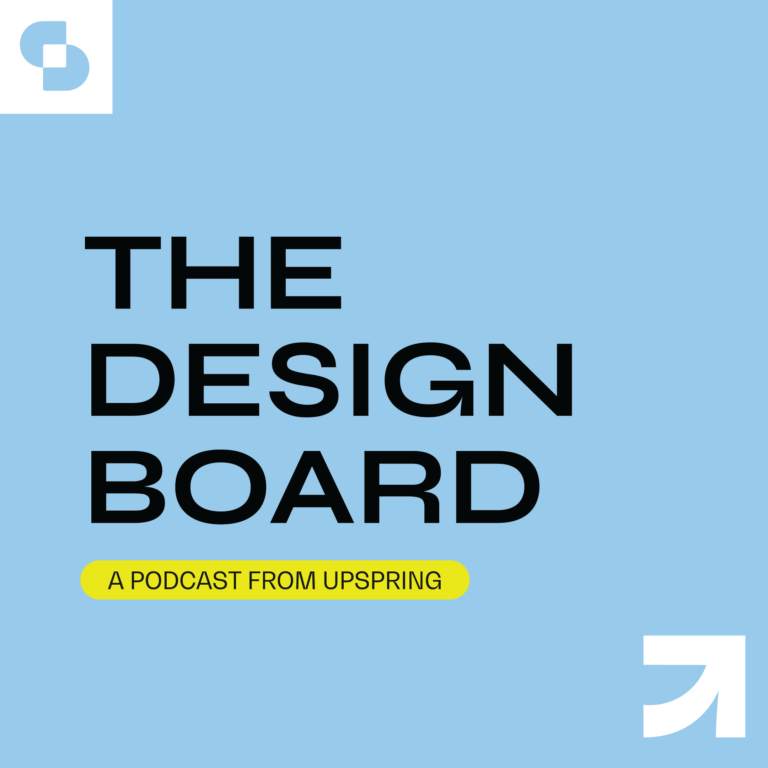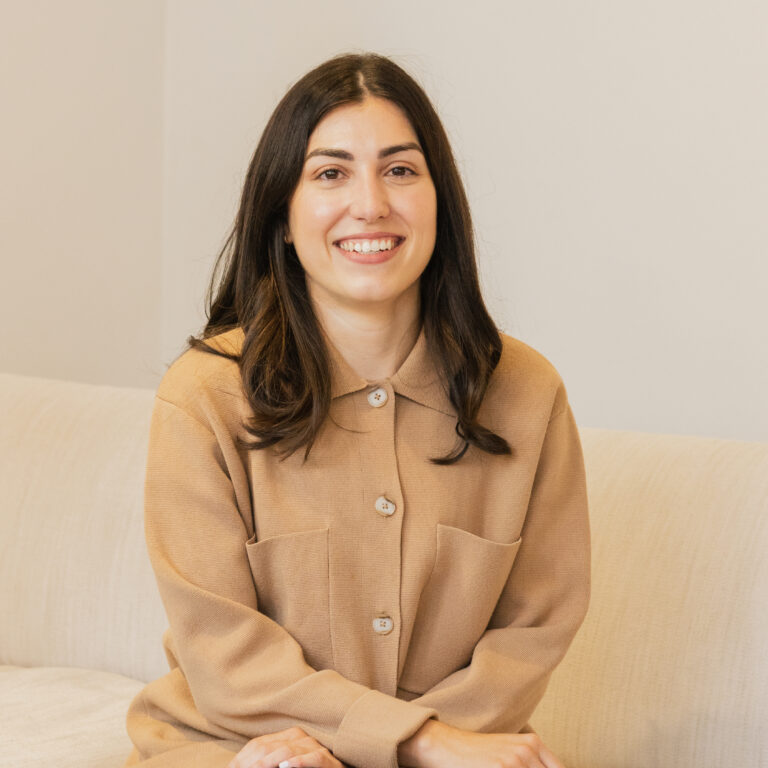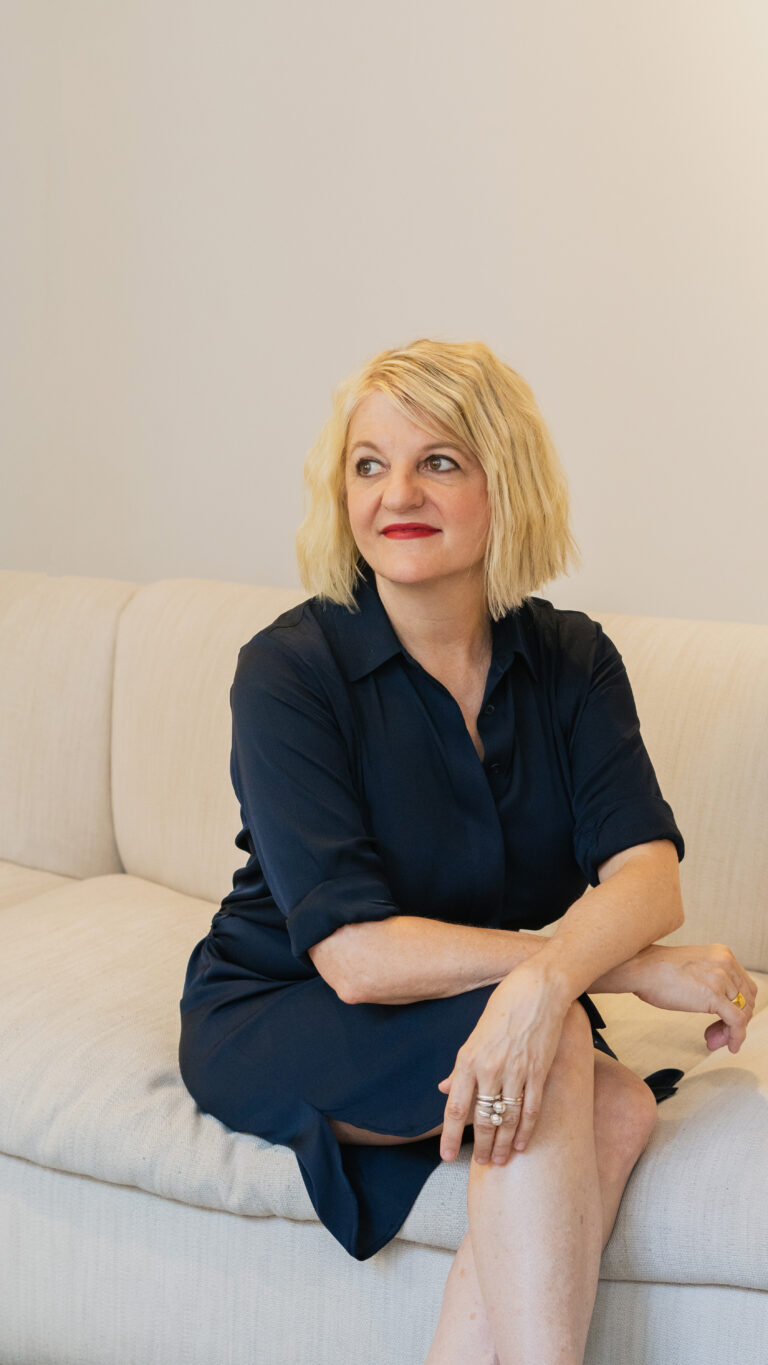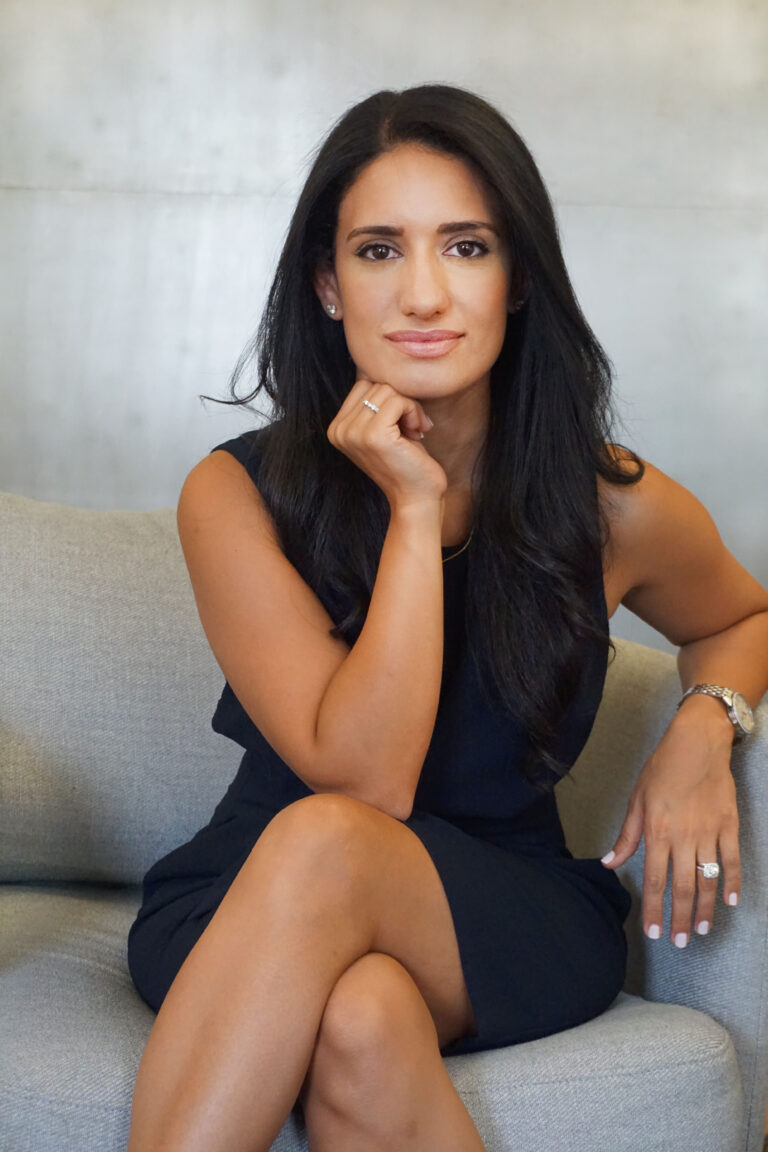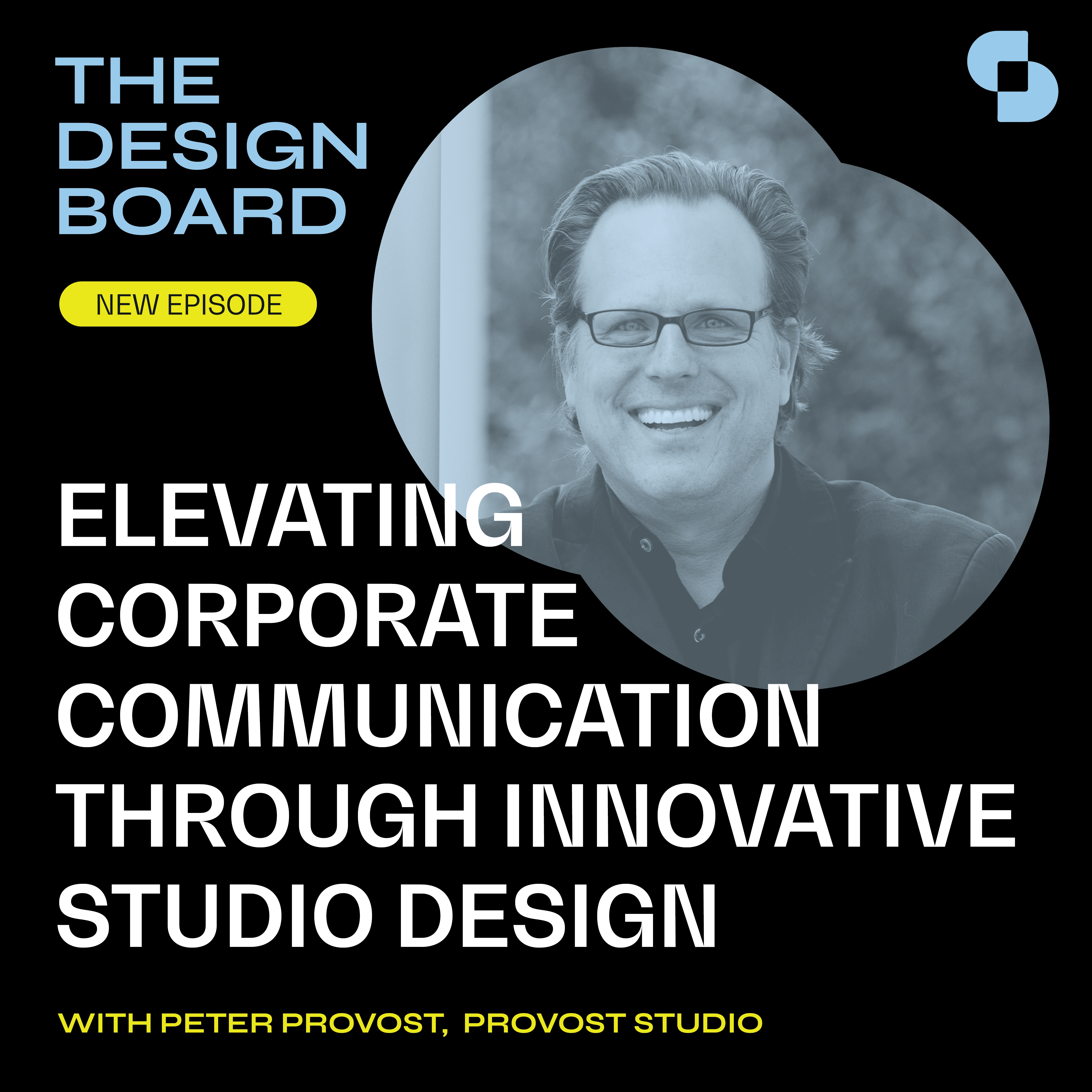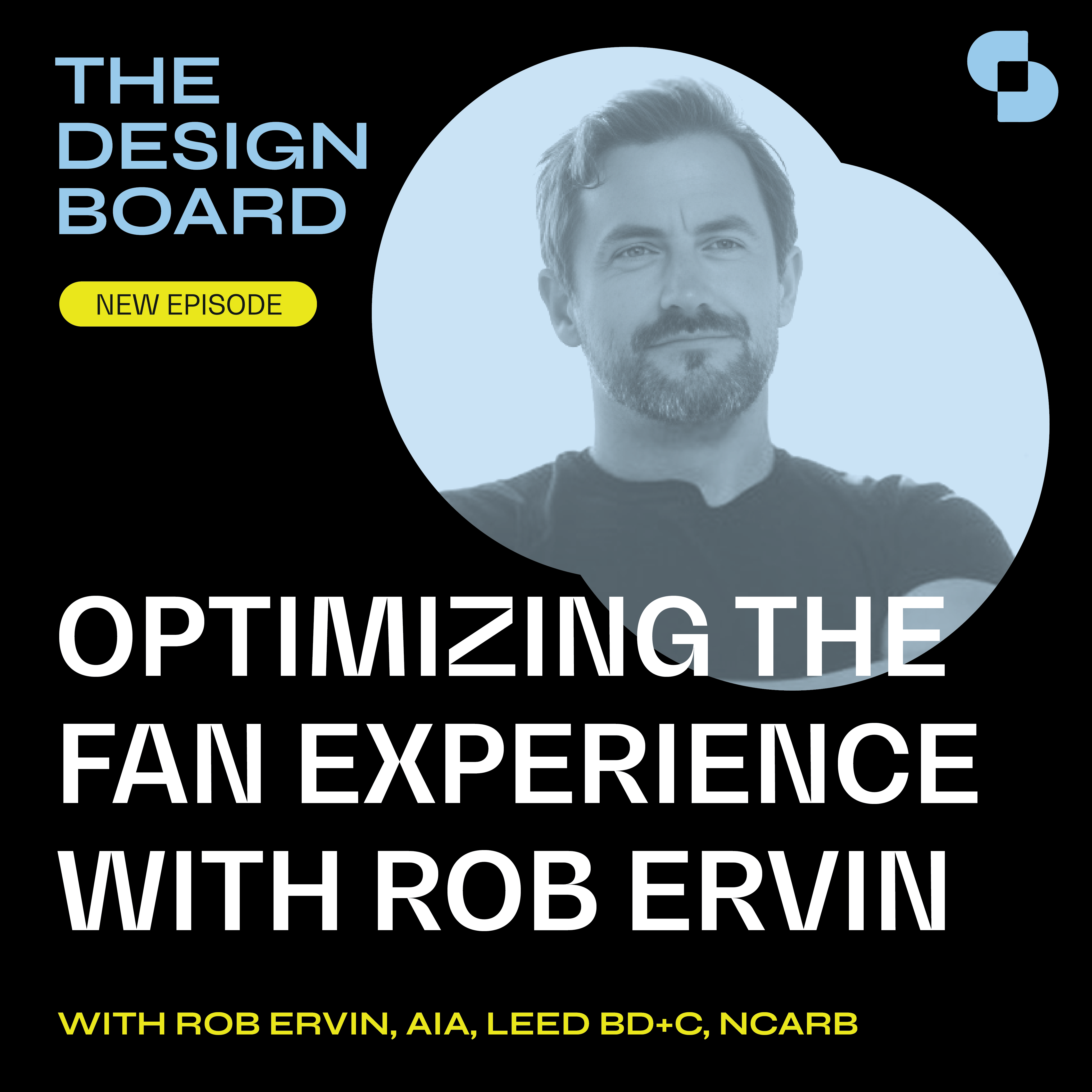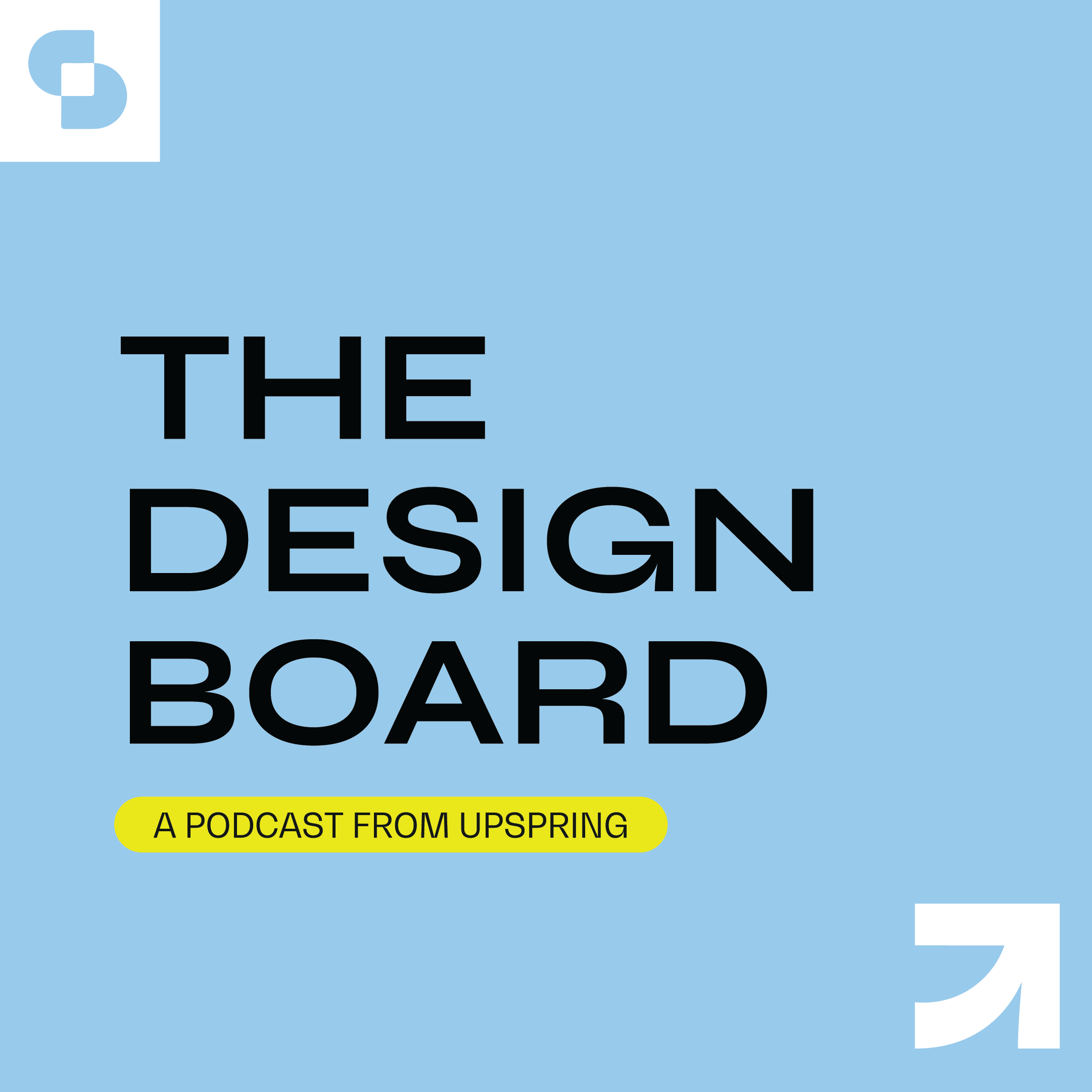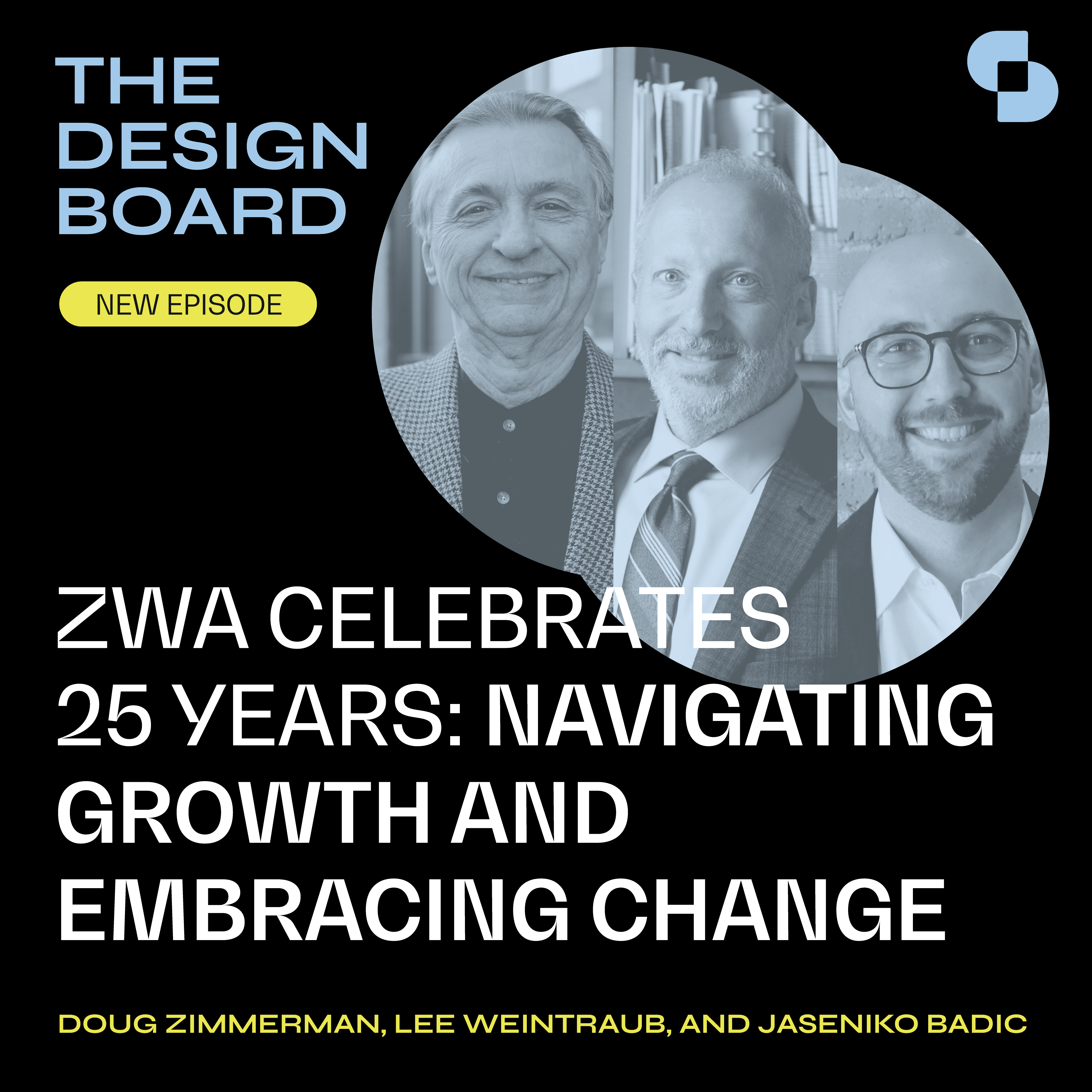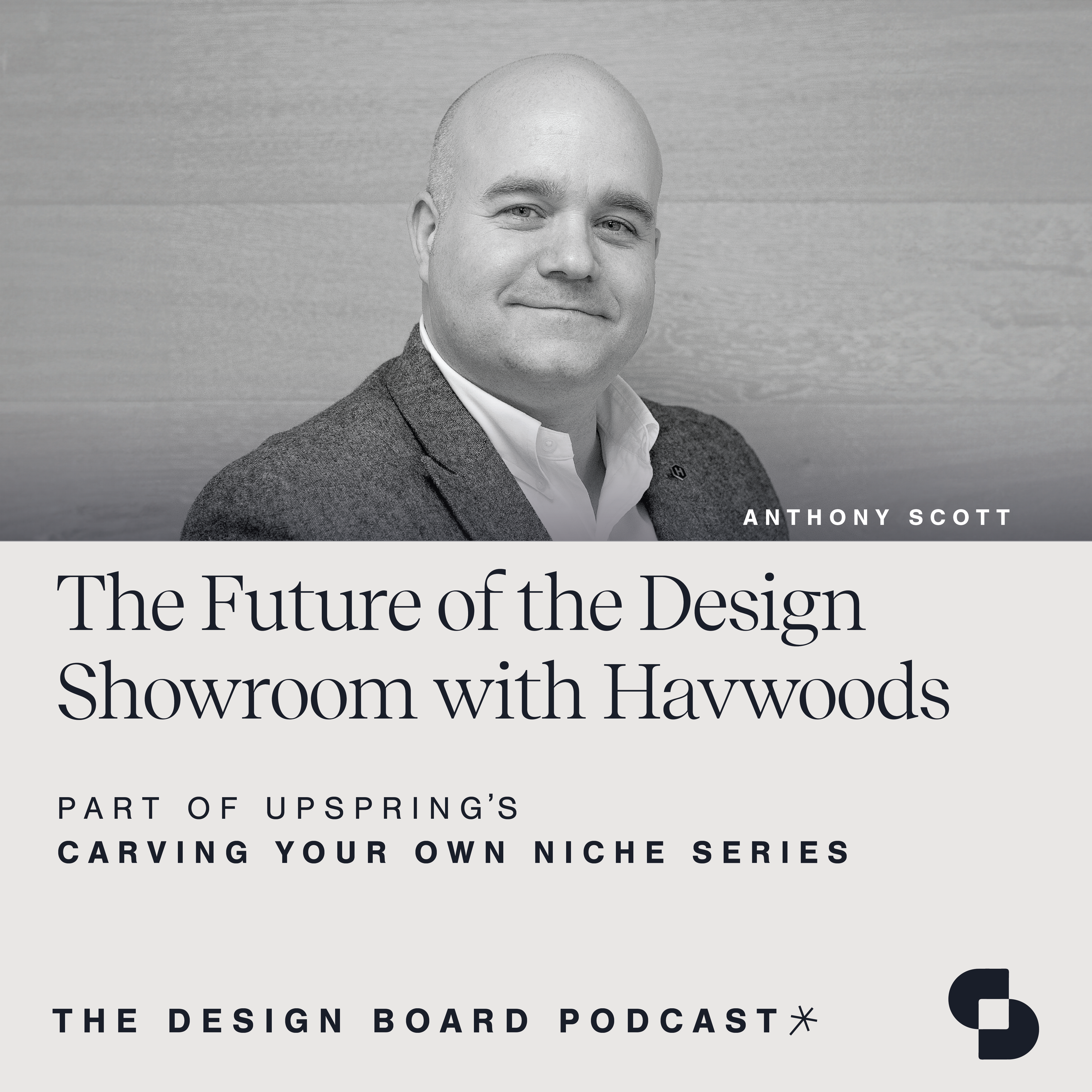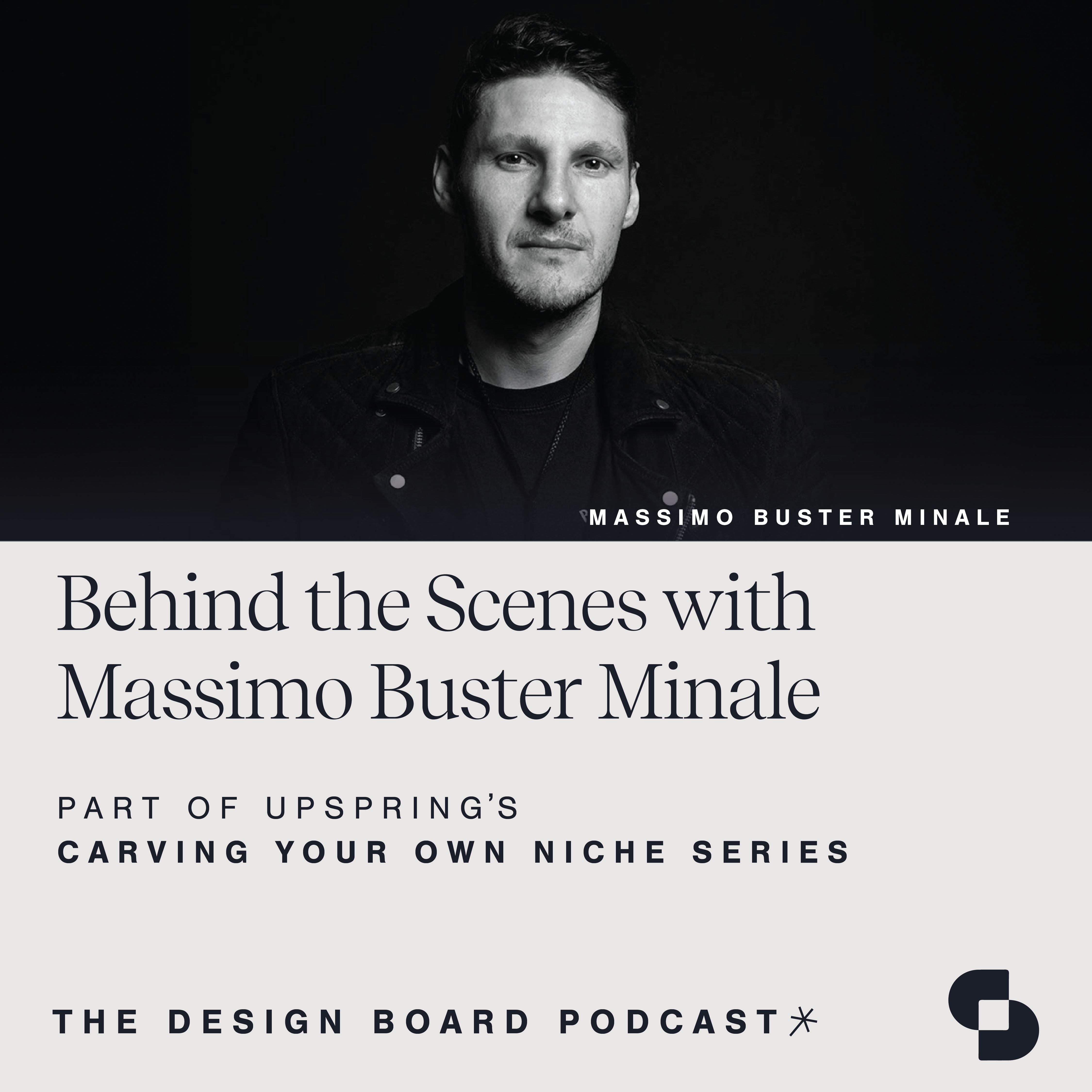When Juniper’s Owner and Founder, Shant Madjarian, left his banking career to pursue entrepreneurship, he knew he wanted to build a team of motivated professionals who would create something with purpose and pioneer change. Two years later, he decided to enter an antiquated market and develop two lighting products. Join us in this enlightening episode as we dive into Shant’s inspiring journey to creating Juniper, a lighting brand that has revolutionized the industry.
The Design Board, by UpSpring, is a proud member of SANDOW Design Group’s SURROUND Podcast Network, home to the architecture and design industry’s premier shows.
Speaker 1: Welcome to The Design Board, a podcast created by the team at UpSpring that focuses on design, development and everything in between. We invite innovators in our industry and explore topics that support your growth in every way. The Design Board is a proud member of Surround, a podcast network from SANDOW Design Group, featuring the architecture and design industry’s premier shows. Check it out at surroundpodcast.com.
Caroline Saba: Welcome to The Design Board, a podcast by UpSpring that focuses on design, development and everything in between. We host innovators in our industry and explore topics that support your growth in every way. I’m your host, Caroline Saba, and I’m joined today by the incredible team at Juniper. When Juniper’s owner and founder, Shant Madjarian, left his banking career in 2011 to pursue entrepreneurship, he knew he wanted to build a team of motivated professionals who would create something with purpose and pioneer change. Two years on, he made the decision to enter an antiquated market and develop two lighting products. To puncture the market, he prototyped the thin LED system by using a reductive design philosophy to shrink the enclosure beyond what was considered possible and applied traditional brass materials and patina to juxtapose the contemporary form factor with heirloom quality finishes. This appealed to the market, but the core innovation was not in the particularities of the design itself, but in the resulting system of simple parts that together formed endless combinations.
It was this concept that formed the DNA of Juniper and has propelled the brand to achieve the success it has today. Over the last 10 years, Shant has built a team of upwards of 50 employees in New York City where Juniper’s Manhattan Showroom is located, and in Connecticut, where it’s recently renovated state-of-the-art manufacturing facility is. Shant, thank you for joining me today. It’s honestly been so incredible to watch Juniper grow over these last few years, and I’m so excited to have the opportunity to chat with you to dissect how you have built such a successful, innovative and inspiring company.
Shant Madjarian: Thanks, Caroline. It’s great to be here.
Caroline Saba: Yeah. Great. So let’s start at the beginning. Can you take us back to the moment when you decided to leave your banking career and pursue entrepreneurship? What motivated you to make that leap?
Shant Madjarian: Yeah, so when I started my career in finance, it was just something kind of at that time I felt was the thing to get into, you graduate from school, you pursued economics and finance, and I got into this industry of financial analysis, eventually banking and whatnot. Throughout that process, I really learned to love what I did, and I think that was something where I met a lot of people, I took curiosity into building financial models, later working with large companies and consulting them on various topics related to profitability, et cetera. But throughout that process, a lot of feedback that I got from the people I worked with was that I was very entrepreneurial and sometimes they would say, we don’t know what really that means, but somehow you take a lot of ownership in what you do. You take it very personally, and these are companies sometimes like 60,000 people in them globally.
So it wasn’t your typical story of finance just wasn’t interesting, I wasn’t passionate about it, on the contrary, I loved it. I still do. I follow that every single day, I invest, I do all sorts of related things to that field, but it was kind of a feeling that I just needed to do or try something on my own because I felt like I sort of had that personality, the what wasn’t important, what I was going to do, I just knew that I wanted to do something that would change the way things are done, again, through the habits of what I had been doing in my previous work, and I thought I’d give myself two years and see how it goes. And worst case, if in two years things didn’t work out, I had great relationships I left on good terms. I didn’t feel like there was really much downside risk at that. So I got into it and then started this business.
Caroline Saba: Yeah, that’s incredible because it’s often scary for many people to take that leap.
Shant Madjarian: I always say [inaudible 00:04:08] that it takes a healthy dose of naivety.
Caroline Saba: Yeah, for sure.
Shant Madjarian: You have to not know certain things about what it takes to run a business in order for you to take that leap from working on a fixed sort of guaranteed salary to just complete-
Caroline Saba: Trying something.
Shant Madjarian: … wild west. Yeah.
Caroline Saba: That’s great. So you talked a little bit about it not necessarily being about the what, but what inspired you to enter the lighting market specifically and why did you see potential here?
Shant Madjarian: So at that point, I guess it had been some 15 years in New York I believe, and I developed a taste for art and design. I always sort of had a bit of an affinity for that, but I think it really developed in New York City like it does for many people. And so I had explored a couple of things, from opening a bakery to be honest with you, to something in more of the arts. And so also important to note growing up, my parents had a business in the lighting industry, in the lighting business, meaning contract hospitality, lighting based out of Montreal.
And I grew up in that. It was very much a family business all the way through, and it wasn’t something that I’d imagined myself getting into, but here sort of getting into this idea that well, what if got into editing a collection of interesting objects, chairs, tables, objects, and then lighting of course would be part of that. And that’s how it all started. Again, it was sort of almost haphazard. It wasn’t such a great idea or a plan to be honest, but knowing a little bit about the industry coupled with an interest in art and design, I think was probably the primary reasons for that.
Caroline Saba: Yeah, I think that’s great. I could definitely hear the entrepreneurial spirit there. I actually didn’t know that story about the bakery. So could you explain the concept behind the thin system and how it differentiated Juniper from other lighting products in the market?
Shant Madjarian: So imagine me sitting at a desk in my apartment in New York City. I think at that time it might’ve been some wine crates with a laptop on it. And so I was surfing the web and trying to figure out who I’m going to work with, collaborators, and try to convince them to work with me that I was going to invest in building these new products and ideas. I’d gone to a couple of trade shows and that was part of that too. But I came across this really interesting lamp or an image of one, and I found out who the designer was, and I called that designer and emailed him and he actually responded, which was really cool. We still work together today and very closely. So it’s been a relationship that has lasted well over a decade now. This was Peter Bristol.
He had said, oh, what you saw online is, it’s a pretty cool lamp I had worked on, but he goes, I have something better. And then he showed me this image of this cool task lamp, which is the thin lamp, the thin task lamp. And so I was like, all right, this sounds great. Now, of course, none of that was ever proven out. It was a digital rendering. Of course, I didn’t know that, hence the naivety. And it’s like, all right, let’s do it. So we came up to sort of a licensing agreement and kudos to him for getting into business with someone who’s working off of wine crates in his apartment. And then that was kind of the long journey to developing the technology that was required to make that work. And what was characteristic of the thin lamp is that really thin profile of the body, which encapsulates the LEDs.
So we worked really hard on that. We brought on another engineer to help us with that and so on. And a lot of these relationships have just lasted the test of time. I work with just about almost everybody I worked with on day one. It’s kind of really cool. It’s certainly on the collaborators side of things. And then that light, too, when we configured it out, and it’s much better today than it was in day one, but it still was pretty cool and new. And I think that absolutely the thinnest on the market. And then that developed into this idea of expanding that into a system and exploring how we could use that very thin profile across a whole host of products, but using it kind of through the system of parts. And that also informed the reductive design thinking that we use, not only in our product development, but in system development and the way we run the business. It’s become a philosophy of design that we employ across the company.
Caroline Saba: I love that. I like what you said too, you really took that leap of faith by emailing Peter, and then same thing with him taking a leap of faith by responding back and engaging in that conversation. That’s so great. And then you started to talk about the design philosophy too. So can we explore that a little more? How does that translate into what you all are doing today?
Shant Madjarian: I think when you start off not from the object side of things, and by all means, I think there is an incredible joy when it comes to artists designing things, regardless of what, it’s just their inspiration. But the philosophy of design for us is a bit different in that we’re looking primarily to find the shortest route between the product and the solution. And oftentimes that can be applied through reductive thinking. So how do we eliminate the unnecessary pieces of an object so that it can serve in its most natural and purest form as-
Caroline Saba: I love that.
Shant Madjarian: … a solution to the problem? And for lighting, we’re trying to deliver light. And so you’re getting that light into the smallest possible case or form says something. Now, it’s not just for purposes of practicality, it’s also important because we are in a world where materials and harvesting materials can be very damaging to the environment. So how could we use fewer of them or less material and less resources to achieve the same objective? But we don’t have to make it sterile. And I think that’s kind where the materiality of what we do comes in, almost tongue in cheek here, but in what we hope is comes across as a very authentic way is applying old world materials even in this reductive form by using materials such as brass and then hand finishing them, even though it might be a tiny amount of it, I think it shows that there’s still a human behind this and not a machine, right?
Caroline Saba: Definitely.
Shant Madjarian: And that we can design and adorn and create without having to add mass to what we do necessarily.
Caroline Saba: Yeah, I love that. And I think that juxtaposition is what helps the product stand out in the market too.
Shant Madjarian: Right.
Caroline Saba: Incredible. So we talked a little about the entrepreneurial spirit. So for your team, how do you cultivate that culture within your team and how do you motivate them to continue this innovation?
Shant Madjarian: So thankfully, part of that tends to be organic when people see the passion that’s there. I think it’s more a question of sharing that passion. It’s opening up, being honest with people and transparent. So the challenge is that doesn’t work for everyone, and it doesn’t work for everyone because that’s not what everyone’s looking for. And it’s hard to ask that in interview question. Who would ever say no to are you a passionate person?
Caroline Saba: So true.
Shant Madjarian: So you [inaudible 00:11:29] to try to read between the lines, look at what the person’s done, and then you kind of just build your team through people you know, people you meet through more standard traditional interview processes and whatnot, of recruiting processes, but ultimately it is an arduous road to building a team. These are not the only 50 people we’ve ever hired, but the good news is we have the best team we’ve ever had because it is through a process of selection that I think it was a comedian once said, no happy marriage ends in divorce. So usually if people aren’t happy where they are, it’s not a good fit, it sort of resolves itself.
But then those who want to be part of something, something that can really mark an industry or provide purpose for the world themselves, it’s kind of how we’ve been able to draw that talent. So it’s probably one of the areas I spend the most time. But in terms of forming culture, this is something you hear a lot of. I don’t know that you can get four people in a boardroom to decide how to form culture.
Caroline Saba: Definitely.
Shant Madjarian: It often does come from leadership, the founder, but it also comes from other people in your organization. And oftentimes it’s almost always it’s contagious and you don’t always know where it comes from, where it starts from. You do want to definitely adjust when you see bad habits or bad characteristics, cultural characteristics forming in the company, but it’s not something you can control as much as sometimes the press makes you believe, I think.
Caroline Saba: Yeah, that’s so true. I like what you said as well, it might not necessarily be the passion, but maybe it’s the purpose that that person is feeling. So that’s great advice. And then let’s talk a little bit about the most recently launched collection that launched at ICFF this year, Multiverse. Can you walk us through that product line a little bit?
Shant Madjarian: Right. So the Multiverse as a concept started actually many years ago, and it was inspired by something I had seen in an exhibition that was this super conceptual idea of tape on a wall. And so now you can imagine this was a time where this reductive design philosophy was forming at the company, and then now I see this tape and this tape is somehow conducting power and it’s lighting, however conceptually at that time, lights or objects, stuff like that. And it blew me away because that’s kind of what this needs to be.
And I thought, well, what if this were applied to track lighting or replace track lighting? Now it wasn’t viable then, and it’s not viable now in terms of tape, pure tape, but we took that concept of making a really low profile conduit or material trim, it turns out, that you could easily snap onto walls and connect going from walls to ceilings and create these beautiful, incredible motifs and patterns or some more sort of clinical edge trimming or whatever it may be, and use it as an architectural detail, but have that actually illuminate track heads, other lamps and so on.
So now you’re bringing all this power, this power that we typically would house behind walls, bringing them to the forefront, easily install, change, and move around. So there’s definitely an installation benefit here, but kind of make it beautiful and that celebrate the track that has been over the years, demonized as the ugly thing you have to put when you can’t use [inaudible 00:15:08] recess lighting. And what if we took that and said, hey, no, no, no, actually you want to use this, right? And it reduces so many issues and problems… It addresses rather, so many problems that exist with lighting and lighting installation by being able to provide this kind of a tool.
And these problems are problems related to installation, the cost of installation, how to move power around in areas where you can’t move power around, installing on concrete ceilings or moving power from one area of the room to another, but doing so in an aesthetic way. That actually can be really interesting and architects and designers could use it to actually make a statement. And so it also solves that aesthetic problem. And that’s kind where the idea started. And honestly, this was the high estimate of what we wanted in terms of when I kind of drew this out as the vision. And I’m happy to say that it has come almost exactly to my highest expectations of what I thought this product could be. So we’re super happy. The only thing being, it took a hell of a long time.
Caroline Saba: I’m sure.
Shant Madjarian: So, it was kind of a stop and go. We did so many things in the process. I wish we could have gotten it out a few years earlier, but it doesn’t seem to matter that much at the end of the day, it’s here and it’s been doing incredibly well.
Caroline Saba: Yeah, it’s so cool. I was blown away when I saw it at ICFF and now I can’t go anywhere and see track lighting and nothing that would be way better with Multiverse.
Shant Madjarian: Absolutely.
Caroline Saba: So let’s talk a little bit about the showroom that you have in downtown Manhattan and Soho and then the manufacturing facility in Connecticut. How do you feel like both of these locations have played into the success?
Shant Madjarian: So it’s a bit of a circular thing here. Part of it is the success is played into those places-
Caroline Saba: Yeah, that’s very fair.
Shant Madjarian: … and when the business took off, there’s two really difficult problems in running a business. One is running out of money. That’s the worst one. And incredibly stressful and it’s very demoralizing. And every business, the one mistake… And you hear people say this over and over again, and you may listen to a million podcasts that tell you this even before you start a business and still fall into the trap, is things cost more than your wildest imagination. So no matter what your worst case scenario is, it’s double that at least. And a lot of businesses fail on that. And so this was kind of an issue where the same with Juniper, you bounce off the bottom a couple of times before you find your footing. The second problem is managing growth. And even if you have the capital to do so at that point, it’s just a lot of stress.
You’re doing a lot of things at the same time. But it was that success that had started to come in that allowed us to even contemplate having a showroom in New York City, for example. And then moving our assembly shop from Industry City in Brooklyn to this incredible opportunity in Connecticut where we found this amazing mill building, an old mill building. I know it’s a bit of a cliche. Well, it’s certainly cliche if you’re building a condo out of it, but we actually repurposed it back to what it was originally, which was a manufacturing facility for garden tools actually in Connecticut. And what I liked about it is it had no subfloor. It was just four beautiful brick walls, very high ceilings, two stories, and it was about almost a hundred years old at this point. And it was an enormous project, and we felt that it spoke to the values of our company, again, this reduction of waste in general, so repurposing a building was important.
We knew we were expanding our manufacturing capabilities from assembly to full fabrication, and now 80% of our production is all done in the US. So we have our CNC machines that we continue to increase and grow that fleet. All of our finishing capabilities are internal, from polishing to patinas to so on, welding and brazing and assembly and QC and the inventory, everything is basically now housed there. And that’s been a big undertaking. But I think one of the more gratifying things that we’ve done in the company and probably the one that has unlocked the most opportunities for us, and as the showroom in New York is concerned, there we set out again with a vision here to do something that felt more hospitality that could welcome people. This was before the pandemic, by the way.
And so it sort of worked out again almost by luck. And moving to Connecticut was also before the pandemic. So there was almost this weird foresight that wasn’t foresight, it was just dumb luck. But the showroom in New York became this bit of a sanctuary, the bar area, you’ve seen it and it’s really to experience lighting in a different way, but also for people to come stop by, hang out a little bit, drop off their bag if they’re traveling or a little bit of a location for people to be… And so that really played out well through the pandemic until today. I think it’s a place where it’s meant to be very welcoming, more so than a traditional lighting showroom.
Caroline Saba: Yeah. Both spaces are incredible, so huge congratulations for those. What about some of the challenges you faced in growing Juniper? I know you touched on them a little bit along the way, but anything that really stands out to you as something that you had to overcome and lessons learned from that?
Shant Madjarian: So one of the things about starting a business is the time where you need help the most, you have the least of it.
Caroline Saba: Interesting. Yeah.
Shant Madjarian: It’s true. It’s just kind of part of our species in a way. So you set out to start a business and the first thing people do is congratulate you. That’s awesome. Knock them dead, you deserve this, whatever, all those kind of platitudes you get when you do something new in life. And then the second things don’t work out as you expected, which is almost like probably 99% of the time when you start a business, people start questioning your choices, especially coming off of a really solid career that many people probably would’ve loved to have. And then things get hard. If you need money, who’s going to catch a falling knife? And I can’t blame anyone for that.
So [inaudible 00:20:58] you don’t really have access to that, and people can smell fear and desperation, so everyone just kind of runs away from you. You got to really rely on yourself to get things back on track. Some people are really good at selling a story, and I think those people are probably more likely to survive in their early days of a business. I am not that person. I certainly have this weird sense of saying it as it is. And at that time, early days, my now wife would tell me, don’t tell people the truth all the time. Just-
Caroline Saba: Fair enough.
Shant Madjarian: … tell the better story. And people would say, well, how are things? I’m like, oh man, I got $4 left in the bank account. Things are miserable. So that’s kind of one of the bigger challenges, but that feeling of loneliness somehow does persist, I would say even through better years and the best of years, because no matter how good your team is… And I’m lucky that we have some very entrepreneurial people in our team, no one really understands the amount of risk that you take and that it’s basically limitless in terms of the race to the bottom here. There’s no safety net.
And of course you have the benefit of the gains, but that stress and that loneliness, sometimes you just feel like you don’t have anyone you can talk to about that. And then the other challenge really is navigation and solidifying the vision. In terms of milestones for Juniper, there’s the physical stuff, like the showrooms and the product launches and all that. But I think the defining moment for Juniper was when the vision was established definitively. So as I mentioned, we did wood chairs and lighting and so on. Even when we moved to exclusively lighting, it wasn’t clear what our purpose was, that started to form with these systems that we were building, and then the purpose of becoming an architectural lighting company and then kind of evolved.
But today, that vision is solid and it’s clear, and it’s changing less. It’s maybe evolving very slowly, but the vision now is in place. Our vision is to create systems. So we create product systems for specific solutions, client solutions, and today that’s in lighting, but that can evolve to beyond lighting and these architectural systems, we understand what that means and we know what the next product would be and what is right and what is wrong for us. So that’s a big challenge when you’re establishing a business through that early growth stage is a lot of things come to you and a lot of opportunities, but these things cost money and each one of them bears a certain project and execution risk.
And if you miscalculate that, you can easily be taken in the wrong direction and then you’re lost in the forest and the game is over. So when you get to that point where you truly understand what your purpose is as a business and how you’re going to solve and what problems you’re going to solve for your customers, I think you’ve really accomplished probably one of the biggest things that comes from a transition from sort of the small nascent business to a more established business with a vision.
Caroline Saba: Yeah, that’s such an interesting perspective. I like what you’re saying too, now this vision will carry you through, hopefully surpass that fear, surpass that loneliness too.
Shant Madjarian: Right. Exactly. That’s right.
Caroline Saba: Incredible. What about future plans for Juniper? Where do you see this next year, the year after heading?
Shant Madjarian: So we’re working on a few important things right now, and first and foremost, we’re a fully vertically integrated business. What that means is that we do our own design, we do our own engineering development, prototypes, production, marketing, sales, and all the way through to the client. And I’m not going to try to sell that as the right way to do things. So this here, I don’t have that kind of conviction. It is our way of doing things and we’re open to considering how we might change or evolve that in the future, but we are building all the different pieces necessary, so you start to see some gaps emerge. I would say our strengths today, we’re great in product development, we’re getting better at getting product to market faster. We’ve made incredible progress leaps and bounds in our production capabilities. I think we run now, I would never say efficient, because that’s sort of an unattainable goal, should be an unattainable goal to be optimal.
But we’re getting a lot closer and super proud of what we’ve been able to accomplish in the production side. Now we’re investing in our go-to market strategy with this idea of how to move product to sales, and we’re expanding our sales team and our sales initiatives. We’re one of the few companies in the lighting industry that does not work with sales agencies, and there’s a very important reason for this, and it’s not a sort of Disney story, good versus evil sort of thing. There are some great sales agents out there and agencies. It’s that our product, the way it sort of sits between decorative and architectural and technology is a hard fit in any one type of agency. And because it’s a complex system that could yield hundreds of thousands of different product combinations and kits and solutions, it’s very difficult to sell in the context of say, 60 other lighting companies on your line card.
And so that proximity to the client is very important. Yes, we do give up the ability to scale the business as fast as we would if we were working with agencies, but it keeps us closer to the client and that, for right now, is the most important thing for us. So bolstering our sales team is another area where we’re looking to reach across the continent, establish some roots on the west coast and in the south, and then sort of further our initiatives here in the northeast on the sales side. And then, like I said, the go-to market strategy of really providing the right tools. Since we built systems, it kind of has to be pervasive through their organization and building more client facing tools, configurators, and the ability for clients to understand our products more readily and on their own time and be able to use those tools to devise their own kit of solutions, essentially, that fits their space, and again, do so in a way that’s very user-friendly.
These are the areas that we’re looking for. And as far as the future, future, Multiverse is really the centerpiece of what we do. Right now is kind of the big thing, and we’re moving that more to the center. All of our products work with the Multiverse. The Multiverse becomes the standard for us in terms of being able to create lighting ecosystems and all of our products interplay with that, and it doesn’t need to be exclusive to lighting. So we are thinking beyond that in terms of audio, video sensors and so on. And I don’t know if you’re aware, Caroline, but I launched another business with a partner that’s related to more on the control side of lighting and in terms of sensors and lighting control systems. So that’s part of the future of the interplay between the two. So moving probably more towards technology, and that’s already been in play in the past few years, but we’re probably going to accelerate that trend.
Caroline Saba: Amazing. The future sounds very bright. This is exciting, such an incredible journey. I think I have one last question for you, just a piece of advice or anything you would say from maybe even looking back where you were in 2011 when you made that jump, what would be that thing you would say to someone who’s considering it?
Shant Madjarian: Right. I would say the piece of advice, it’s a two-part advice. One is never burn bridges. I say this, it’s the mistake that tends to happen mostly in people new to their careers. I’ve done it, I’ve regretted it. Thankfully I learned quickly from that. And it’s very important that along the journey you always think about people and situations they might have been in and understand that maybe they’re not useful to you at that point or you’re not useful to them at that point, but help people and try to be helpful. And when things do separate, there’s no value at all in destroying relationships.
Caroline Saba: Totally.
Shant Madjarian: And on the same token, I would say surround yourself by good people and take care of those people because the relationship just gets stronger over the years.
Caroline Saba: I love that.
Shant Madjarian: And the people you can count on, and like I said, I’ve been working with a handful of people through the whole journey, and we’ve grown together, we’ve done different things, and that kind of trust and foundation is very, very important I think, under any scenario when you’re trying to build something. So that would be probably my biggest advice.
Caroline Saba: I think that’s great. Both great pieces of advice, being kind, being nice, don’t leave things on bad terms, and then surrounding yourself by people who are going to lift you up too. And you lift them up as well.
Shant Madjarian: Absolutely.
Caroline Saba: Well, thank you again, Shant. This has been so inspiring. I appreciate the time. And thank you everyone for listening in.
Shant Madjarian: Thank you, Caroline.
Speaker 1: Thank you so much for listening in with us today. We hope you leave inspired by the ideas in today’s episode. For more, follow UpSpring on LinkedIn and Instagram. And don’t forget to check out the amazing lineup of shows brought to you by the Surround Podcast Network at surroundpodcast.com.

